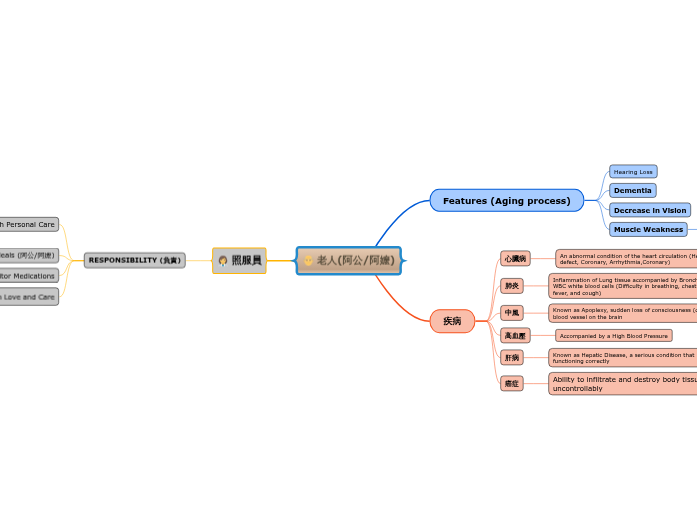Chapter 7 - Energy System and Muscle Fibres
ATP
ATP Resynthesis
Cellular Respiration: Resynthesizes ATP aerobically using the electron transport chain in mitochondria.
Glycolysis: Resynthesizes ATP anaerobically in the absence of oxygen.
Creatine Phosphate: Provides a rapid way to regenerate ATP in the ATP-PC system.
Muscle Contraction
Binds to myosin, releasing myosin head from actin, and provides energy for the power stroke.
Required for muscle fibres to contract and relax.
Provides energy for various cellular processes.
Primary energy carrier in cells, composed of adenine, ribose, and three phosphate groups.
Myoglobin
Endurance training can increase myoglobin content in muscles, enhancing oxygen storage and delivery capacity.
Increases the efficiency of oxygen delivery to mitochondria during aerobic respiration.
Protein found in muscle tissue that binds oxygen and facilitates its transport within muscle cells.
Stores oxygen in muscle cells for use during intense activity.
Energy Systems
Anaerobic Energy System
Activities like sprints or high-intensity interval training where there's a quick shift from aerobic to anaerobic.
Oxygen is not present.
Not directly involved in anaerobic ATP production, myoglobin helps delay the switch to anaerobic metabolism.
Aerobic Energy System
Crucial for endurance activities like long-distance running, cycling, and swimming.
Oxygen is present.
Supports sustained aerobic activity by ensuring a steady supply of oxygen to mitochondria.
Muscle Fibre Types
Three Fibre types
Fast Glycolytic (Type IIB)
Most efficient in short distance sprints and powerlifting.
Produce quickest burst of energy, shortest duration.
Very low fatigue resistance.
White/Pale in colour.
Fast contraction without presence of oxygen.
Fast-Oxidative Glycolytic (Type IIA)
Most efficient for medium distance running events, hockey shifts.
Moderate fatigue resistance.
Red/White in colour.
Higher speed energy release.
Intermediate muscle fibre type.
Slow-Oxidative (Type I)
Most efficient for sports such as marathons, biathalons, swimming.
Depend on primarily aerobic processes.
Very fatigue resistant.
Energy generated at slow pace.
Fast Twitch Muscle Fibres
Activate at twice the rate that slow twitch muscle fibres do.
High levels of glycolytic enzymes.
Pale in colour.
Tense and relax quickly, large amounts of tension and low endurance levels.
Slow Twitch Muscle Fibres
Contains myosin ATPase to provide instant energy for muscle contractions.
Red/Dark in colour.
Relax tension slowly, low level of tension for long duration.
Lactic Acid Threshold
Lactic Acid
Produced during the breakdown of glucose in the absence of sufficient oxygen (glycolysis).
Organic acid produced in the muscles during intense exercise when oxygen availability is limited.
Lactate Threshold
Marks the transition from aerobic to combined aerobic-anaerobic metabolism.
Exercise intensity at which the concentration of lactate in the blood begins to rise exponentially.
Metabolic Pathways
Cellular Respiration (Aerobic)
Three sub-pathways included in cellular respiration.
Electron Transport Chain
Series of electron carriers and protein complexes.
36 ATP produced with byproducts being water and carbon dioxide.
Final stage of subpathways.
Krebs Cycle
Electrons sent to process in mitochondria.
2 ATP molecules produced at end of stage.
Second stage of the subpathways.
Glycolysis
In presence of oxygen, pyruvic acid is converted into actetyl-CoA.
This is the first stage of subpathways.
Limitations include muscle fatigue and lactic acid buildup, along with a great need for oxygen.
Examples include marathon, triathalon.
3min and up in duration, with water and carbon dioxide as byproducts.
Oxygen is used.
Pathway uses 36 ATP.
Energy source being used is glycogen, fats, and proteins.
Glycolysis (Anaerobic Lactic)
Limitations include lactic acid buildup and muscle fatigue.
Examples include 800m sprint, hockey shift, speed skating.
15sec-3min duration, with lactic acid buildup as a byproduct.
Pathway uses 2 ATP.
Energy source being used is glucose.
ATP-PC (Anaerobic Alactic)
Limitations include short duration, and muscles store low amounts of both ATP and creatine phosphate.
Examples include sprinting, jumping, throwing.
10-15 seconds in duration, with no byproducts.
No oxygen is used.
Pathway uses 1 ATP.
Energy source being used is creatine phosphate.
Energy Sources
Glucose (Glycogen)
Excess glucose is stored as glycogen in the liver and muscles.
Glucose is the primary fuel for most cells in the body, especially the brain and muscles during exercise.
Fats/Proteins/Carbohydrates
Fats are the most energy-dense macronutrient, providing about 9 calories per gram, providing long-term energy reserve.
Proteins are primarily used for growth, repair, and maintenance of tissues.
Carbohydrates are the body's main source of energy.
Creatine-Phosphate
Allows muscles to sustain maximal efforts for up to 10-15 (anaerobic alactic energy system) seconds by providing a quick source of ATP.
Serves as an immediate energy reservoir for the resynthesis of adenosine triphosphate (ATP).
Key Nutrients
Proteins
Energy production
Amino acids can be converted into intermediates generating ATP
Proteins can contribute to energy production indirectly.
Muscle maintenance and repair
Proteins are needed to repair and rebuild tissues, contributing to overall muscle health and function.
Crucial for the maintenance, repair, and growth of muscle tissue.
Fats
Energy or endurance training
Glycogen become depleted, prompting the body to turn to fat stores for energy.
Prolonged exercise requires sustained effort, the body relies increasingly on fats as a fuel source.
Sustained energy release
Energy that can be accessed during periods of fasting or increased energy demand.
Stores excess energy primarily in the form of fat.
Long-term energy storage
High energy density makes them an efficient fuel source for energy production.
Provide more than twice the energy per gram compared to carbohydrates or proteins.
Carbohydrates
Stored within skeletal muscles and within liver as glycogen.
Glucose is usual form in which carbs are assimilated by humans.
Provide materials to build cell membranes.
Most important and abundant energy source in nature, essential for human life.









